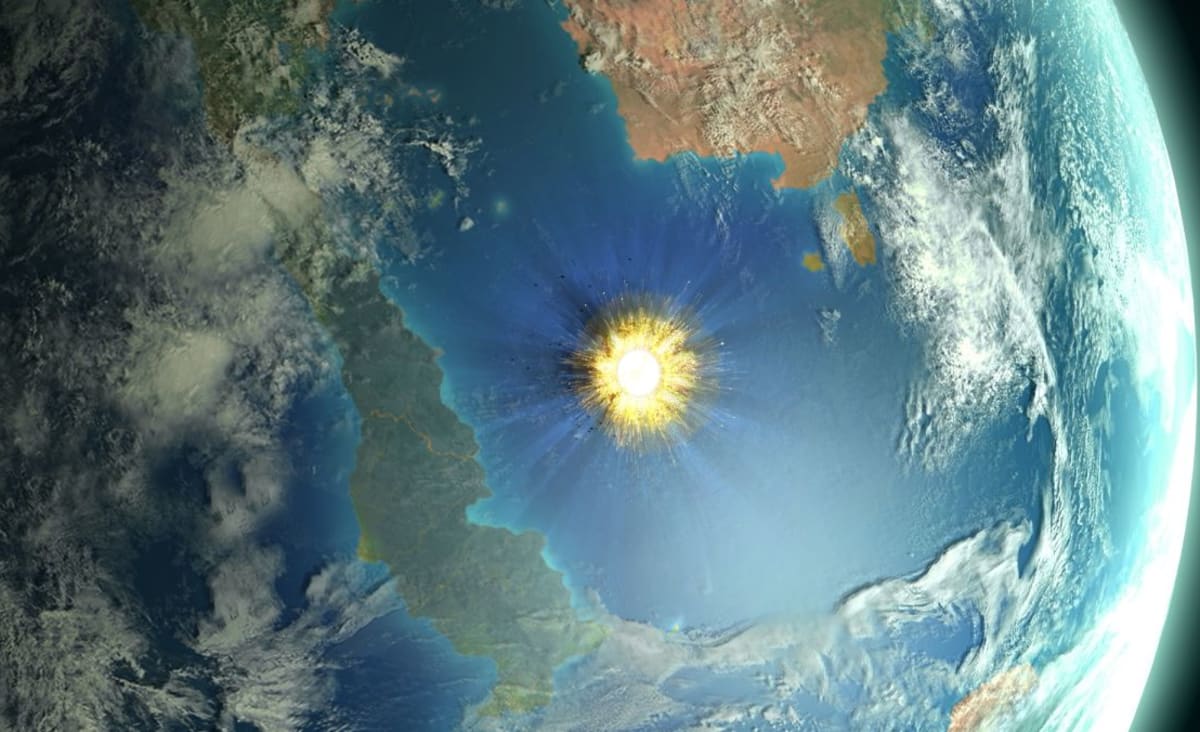
www.space.com
Scientists locate likely origin for the dinosaur-killing asteroid
Before ending the reign of the dinosaurs, a critical asteroid hurtled towards our planet, but scientists have never been able to pinpoint its source. New research shows where this impactor may have evolved.
Science & Tech
The asteroid accredited with the extinction of the dinosaurs 66 million years ago is likely to have originated from the outer half of the solar system’s main asteroid belt, according to new research by Southwest Research Institute (SwRI).
Known as the Chicxulub impactor, this large object has an estimated width of 6 miles (9.6 kilometers) and produced a crater in Mexico’s Yucatan peninsula that spans 90 miles (145 kilometers). After its sudden contact with Earth, the asteroid wiped out not only the dinosaurs, but around 75 percent of the planet’s animal species. It is widely accepted that this explosive force created was responsible for the mass extinction that ended the Mesozoic era.
Researchers used computer models to analyse how asteroids are pulled from their orbit in different areas of the asteroid belt and drawn towards planets. The observations of 130,000 model asteroids, along with data and behaviour seen in other known impactors, found that objects are 10 times more likely to reach Earth from the outer asteroid belt than previously thought.
Prior to crashing into Earth, the extinction-causing asteroid orbited the sun with others, in the main asteroid belt. This concentrated band lies between planets Mars and Jupiter, with its contents usually kept in place by the forces of gravity. Before this study was released, scientists thought that very few of Earth’s impactors escaped from the belt’s outer half. But, researchers at SwRI discovered that “escape hatches” could be created by thermal forces, which pull more distant asteroids out of orbit and in the direction of Earth.
The objects found in these outermost parts of the asteroid belt include many carbonaceous chondrite impactors. These are dark, porous and carbon-containing rocks which can also be found on Earth. Leading up to this research, other scientists have attempted to learn more about the object that doomed the dinosaurs. This included examinations of 66-million-year-old rocks. By doing this, geologists discovered that the Chicxulub asteroid had a similar composition to today’s carbonaceous chondrites.
In the solar system, many objects surrounding Earth share similar composition to this impactor, however they are all much smaller, with widths around one mile. Researchers at SwRI used NASA’s Pleiades Supercomputer to analyse how asteroids furthest from the sun would have evolved over hundreds of millions of years. One aim was to see where the bigger asteroids lie today.
“To explain their absence, several past groups have simulated large asteroid and comet breakups in the inner solar system, looking at surges of impacts on Earth with the largest one producing Chicxulub crater,” one of the study’s researchers, Dr. William Bottke, said.
























































